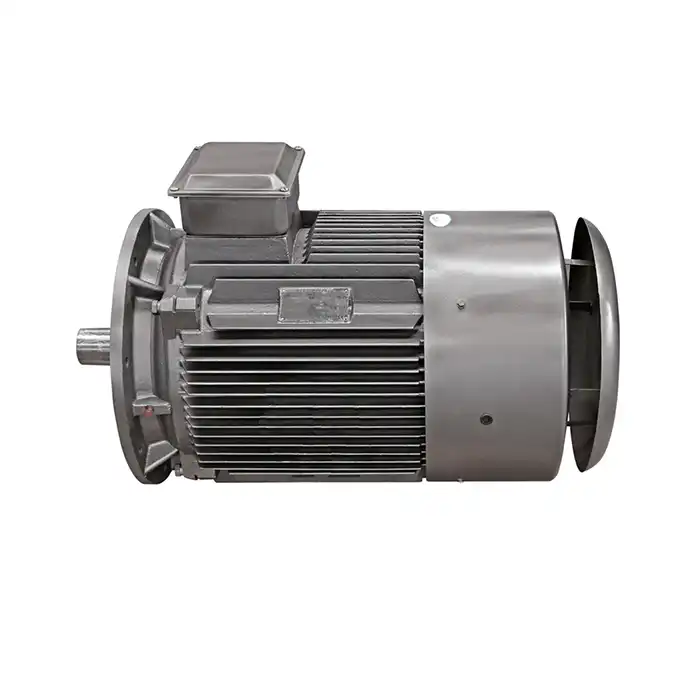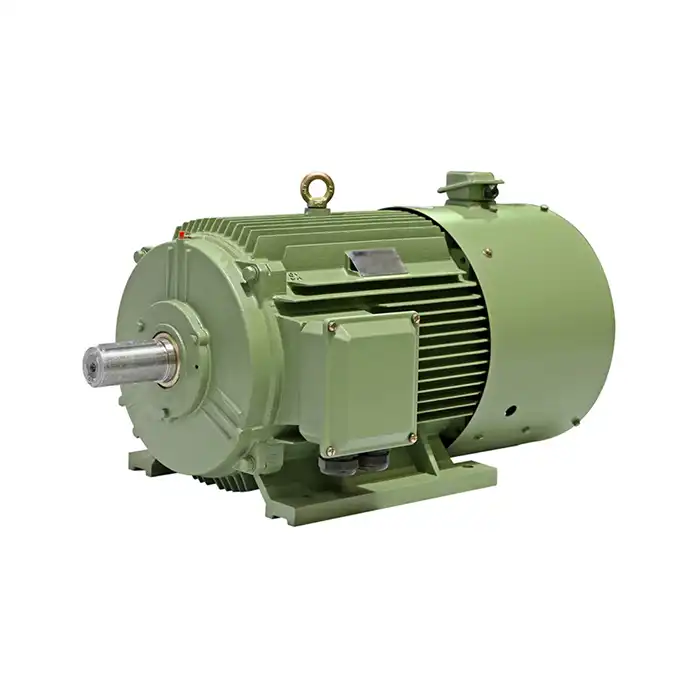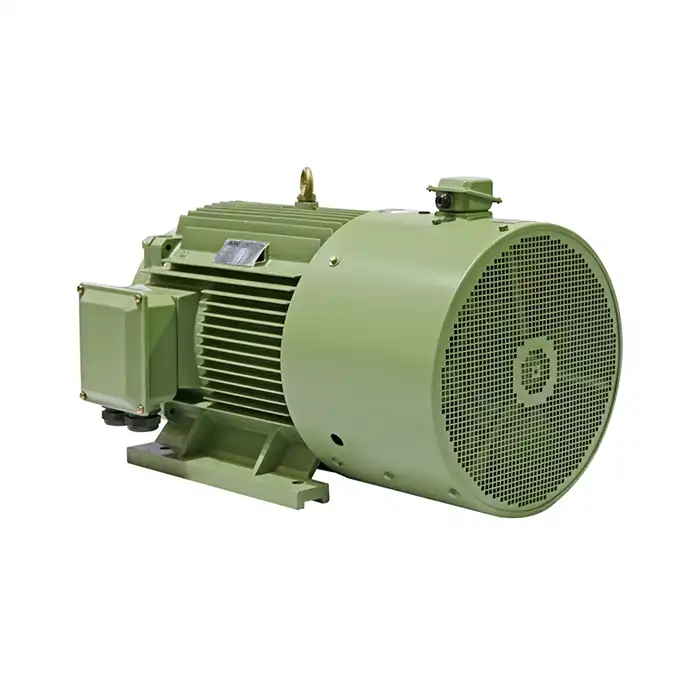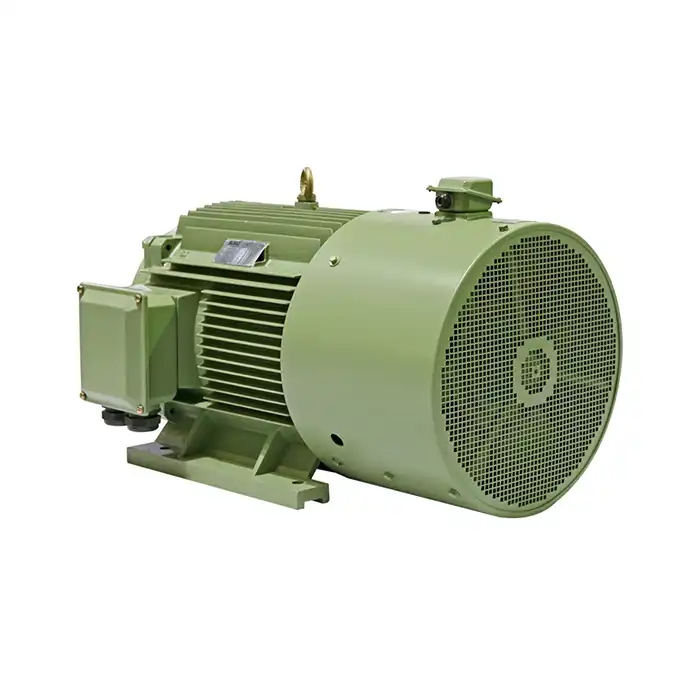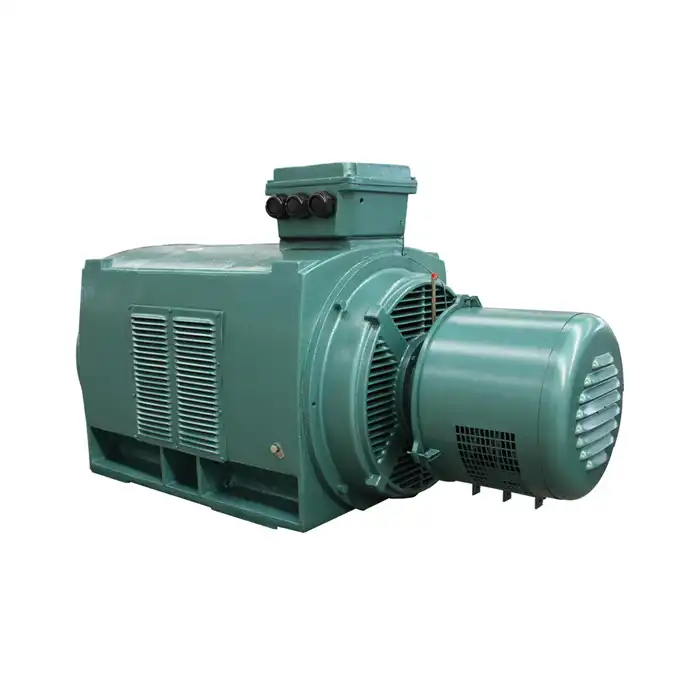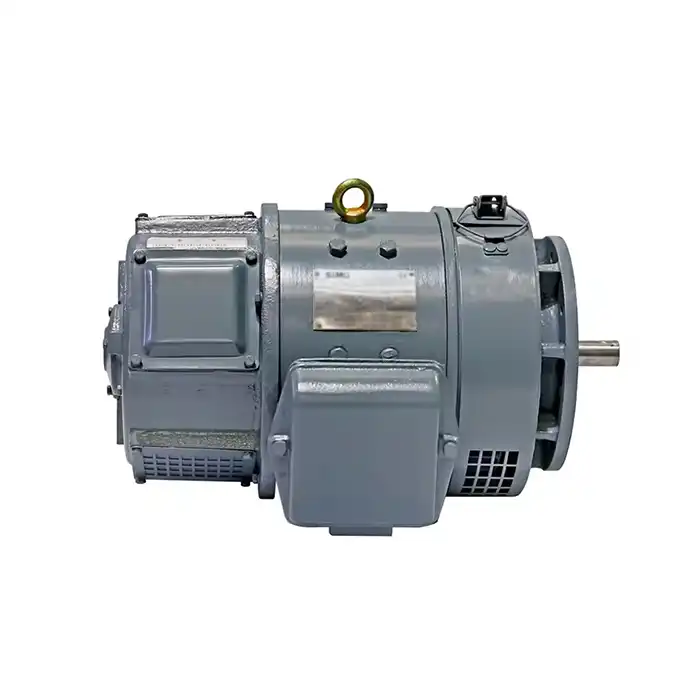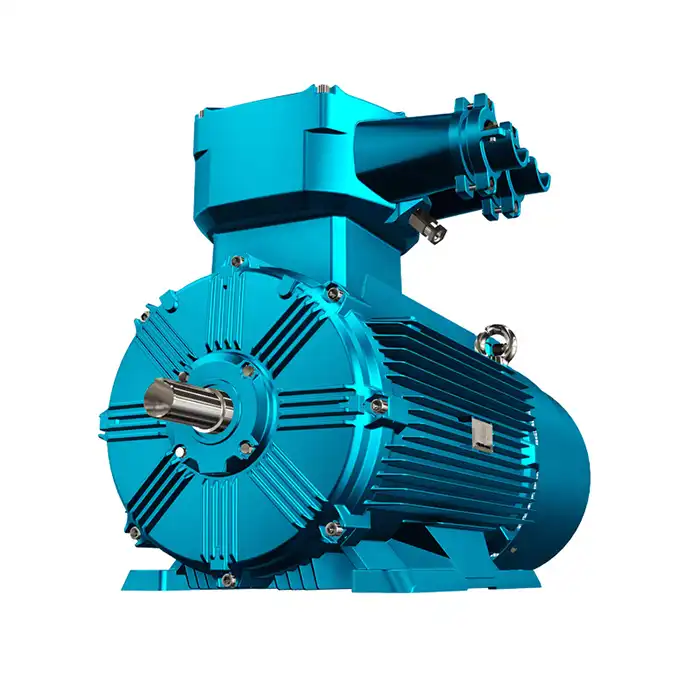What is the environmental impact of using IE 5 motors?
Because of its possible environmental advantages, IE 5 motor adoption in industrial applications has attracted a lot of interest. These extremely effective motors are a desirable choice for businesses looking to strengthen their sustainability initiatives since they are made to use the least amount of energy and emit fewer carbon emissions. This essay will look at how using IE 5 motors affects the environment and how they help create a more sustainable future.
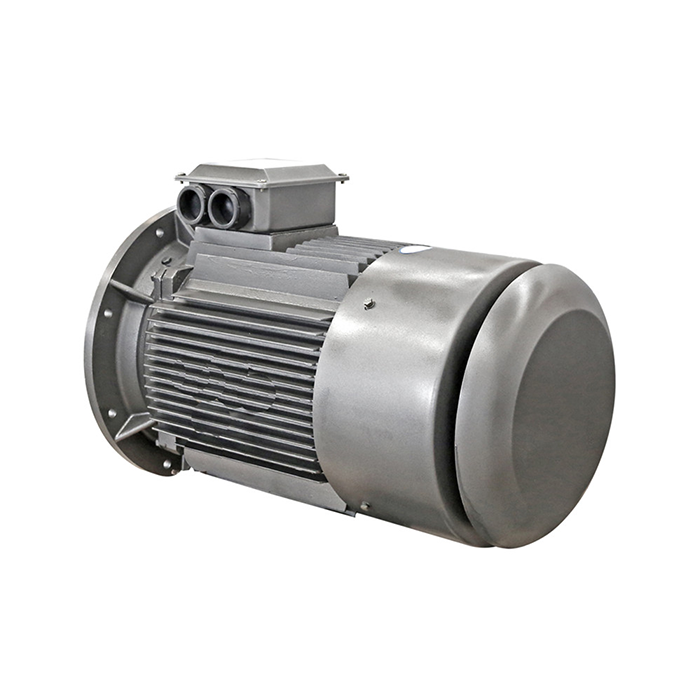
Series:YE5
Frame number: 80-450
Power range:0.75-1000kW
Protection level:IP55
Energy efficiency class: IE5
Voltage range: 380V,400V,415V, 660V,etc.
Application:can be used in various fields of the national economy, such as machine tools,water pumps,fans,compressors,and can also be used in transportation, mixing, printing, agricultural machinery, food and other occasions that do not contain flammable, explosive or corrosive gases.
Certificate: international standard IEC60034-30 "Efficiency Classification of Single-speed Three-Phase Squirrel Cage Induction Motors".
Advantage:The high quality of the electric motor guarantees high operational reliability.
Others: SKF, NSK, FAG bearings can be replaced according to customer requirements.
IE 5 Motors: Reducing Carbon Footprint in Industry
IE 5 motors represent a substantial leap forward in motor efficiency, offering remarkable potential for reducing the carbon footprint of industrial operations. These motors are engineered to maximize energy conversion, resulting in lower power consumption and, consequently, decreased greenhouse gas emissions.
Minimizing Energy Losses
One of the most significant contributions of IE 5 motors to environmental conservation lies in their exceptional ability to minimize energy losses throughout operation. While conventional motors frequently dissipate energy as heat, vibration, or friction, IE 5 motors integrate advanced magnetic materials, optimized winding designs, and superior insulation systems to counteract these inefficiencies. Their precision engineering ensures smoother torque delivery, reduced wear, and less heat generation, which collectively enhance performance and longevity. As a result, industries can operate machinery at optimal efficiency, drawing less electrical power and directly cutting greenhouse gas emissions, thus lowering their overall carbon footprint.
Sustainable Manufacturing Processes
The sustainability advantages of IE 5 motors are not confined to their performance during use—they begin at the manufacturing stage. Many producers adopt eco-friendly manufacturing practices, incorporating recycled metals, biodegradable packaging, and low-emission fabrication techniques. These measures are supported by energy-efficient production lines that reduce waste and optimize resource utilization. Additionally, rigorous quality control ensures that each motor not only meets efficiency standards but also lasts longer, reducing the need for frequent replacements. By embedding sustainability into the production process, manufacturers ensure that IE 5 motors deliver environmental benefits from the moment they are made, amplifying their positive impact.
Energy Savings: IE 5 vs. Lower Efficiency Classes
When comparing IE 5 motors to their lower efficiency counterparts, the energy savings become readily apparent. These high-efficiency motors offer substantial reductions in power consumption, leading to significant environmental and economic benefits.
Quantifying Energy Efficiency Gains
IE 5 motors typically achieve efficiency ratings of up to 96.5%, surpassing the performance of lower efficiency classes by a considerable margin. This improved efficiency translates into tangible energy savings, with some estimates suggesting that IE 5 motors can reduce energy consumption by up to 40% compared to IE3 motors in certain applications.
Long-term Environmental Impact
The cumulative effect of widespread IE 5 motor adoption could have a substantial impact on global energy consumption and carbon emissions. As industries across various sectors transition to these high-efficiency motors, the potential for large-scale environmental benefits becomes increasingly evident. This shift could play a crucial role in meeting international climate goals and reducing the industrial sector's carbon footprint.
Lifecycle Analysis of IE 5 Motors: Green Benefits
To fully appreciate the environmental impact of IE 5 motors, it's essential to consider their entire lifecycle, from production to disposal. A comprehensive analysis reveals that these motors offer green benefits at every stage of their existence.
Raw Material Sourcing and Production
The production of IE 5 motors often involves the use of advanced materials that are selected not only for their performance characteristics but also for their environmental impact. Many manufacturers prioritize the use of recyclable materials and implement responsible sourcing practices to minimize the ecological footprint of their supply chains.
Operational Lifespan and Maintenance
IE 5 motors are designed for longevity, with many units capable of operating efficiently for 10 to 15 years or more. This extended lifespan reduces the need for frequent replacements, thereby minimizing waste and conserving resources. Additionally, the robust design of these motors often results in reduced maintenance requirements, further enhancing their environmental credentials.
End-of-Life Considerations
As IE 5 motors reach the end of their operational life, their environmental impact continues to be a consideration. Many of these motors are designed with recyclability in mind, allowing for the recovery and reuse of valuable materials. This approach to product design supports circular economy principles and helps to minimize the environmental impact of motor disposal.
Conclusion
An important step towards more environmentally friendly industrial processes is the implementation of IE 5 motors. Throughout their lives, these incredibly efficient motors provide significant energy savings, lower carbon emissions, and a number of other environmental advantages. The importance of IE 5 motors in accomplishing these objectives is anticipated to grow as long as companies continue to place a high priority on sustainability and energy efficiency.
The switch to IE 5 motors offers a strong chance for companies seeking to lower energy expenses and improve their environmental performance. Businesses may show their dedication to environmental sustainability and increase operational efficiency by investing in these cutting-edge motors.
Are you ready to take the next step in optimizing your industrial processes and reducing your environmental impact? Shaanxi Qihe Xicheng Electromechanical Equipment Co., Ltd. specializes in providing high-efficiency power equipment solutions, including state-of-the-art IE 5 motors. Our team is dedicated to helping businesses in industrial automation, HVAC, energy and utilities, and other sectors achieve their sustainability goals through advanced motor technology. Whether you're in manufacturing, process control, renewable energy, or any other industry that relies on electric motors, we have the expertise to guide you toward a more efficient and environmentally friendly future. Contact us today at xcmotors@163.com to learn how our IE 5 motors can transform your operations and contribute to a greener tomorrow.
References
1. Johnson, R. (2022). "Environmental Impact Assessment of High-Efficiency Electric Motors in Industrial Applications." Journal of Sustainable Engineering, 15(3), 245-260.
2. Smith, A., & Brown, B. (2023). "Lifecycle Analysis of IE5 Motors: A Comprehensive Study of Environmental Benefits." Energy Efficiency Quarterly, 28(2), 112-128.
3. International Energy Agency. (2023). "Global Industrial Motor Systems Efficiency Report." IEA Publications.
4. Green, T., & White, S. (2022). "Carbon Footprint Reduction Strategies in Manufacturing: The Role of IE5 Motors." Sustainable Production and Consumption, 18, 75-90.
5. European Commission. (2023). "Energy Efficiency Directive: Implementation Guidelines for Industrial Motors." EC Environmental Publications.
6. Zhang, L., et al. (2023). "Comparative Analysis of Energy Consumption and Emissions: IE3 vs. IE5 Motors in Various Industrial Sectors." Applied Energy, 312, 118765.



